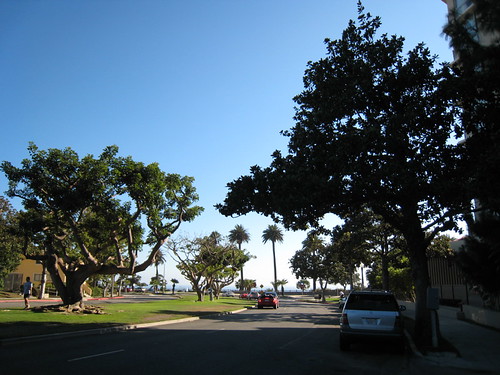My Great Uncle Wally ("WSB") died today at the remarkable age of 93. While I cherished my visit with him last August, those moments are now a far more priceless commodity. As my oldest living relative, he had insight into a generation that is quickly disappearing from this earth. Although he admitted during our recent conversations that many of his memories had long since faded, the nuggets of information he was able to reveal gave rare insight into my grandmother’s family – things that no other person would know.
Coincidentally, WSB’s wife JC died within days of her husband, although her mind had sadly gone long before her body.
A brain is like a computer hard drive – once it crashes, there is no getting that precious data back. The only way to back it up is archive what you know, write down important stories, label photographs, care for family heirlooms, keep in touch with relatives. Having relied on birth certificates and census records as a minimalist means of piecing together family history, it is the personal testimonies that add color and fill in the blanks. Without them, genealogy risks being just a bunch of boring facts and dull figures.
We live in an age where it is possible to document just about anything. Old photographs and letters can be scanned; digital archives can be burned to a disc and shared with family members en masse; video interviews (as I conducted with WSB) can be stored on tape, with an edited version compressed to DVD.
But just like loved ones, digital data is fragile and impermanent. Paper and photographs aren’t exactly stable materials, however their physicality allows them to endure through time, while technology evolves and becomes incompatible with future generations. What good is a DVD archive when the format becomes obsolete?
WSB’s lifetime of knowledge now exists only amongst those who knew him, who heard his tales and remembered them. And when those people are gone, only the fragments of information left behind will perpetuate his unique moment in history. As a minor heir to his memory bank, I intend to do my best to preserve and perpetuate the small wealth of memory he had given to me.
Coincidentally, WSB’s wife JC died within days of her husband, although her mind had sadly gone long before her body.
A brain is like a computer hard drive – once it crashes, there is no getting that precious data back. The only way to back it up is archive what you know, write down important stories, label photographs, care for family heirlooms, keep in touch with relatives. Having relied on birth certificates and census records as a minimalist means of piecing together family history, it is the personal testimonies that add color and fill in the blanks. Without them, genealogy risks being just a bunch of boring facts and dull figures.
We live in an age where it is possible to document just about anything. Old photographs and letters can be scanned; digital archives can be burned to a disc and shared with family members en masse; video interviews (as I conducted with WSB) can be stored on tape, with an edited version compressed to DVD.
But just like loved ones, digital data is fragile and impermanent. Paper and photographs aren’t exactly stable materials, however their physicality allows them to endure through time, while technology evolves and becomes incompatible with future generations. What good is a DVD archive when the format becomes obsolete?
WSB’s lifetime of knowledge now exists only amongst those who knew him, who heard his tales and remembered them. And when those people are gone, only the fragments of information left behind will perpetuate his unique moment in history. As a minor heir to his memory bank, I intend to do my best to preserve and perpetuate the small wealth of memory he had given to me.

